Budapest, Not Quite Mongolia!
Dave the motorhome is still parked at Camping Haller in Budapest (N47.47574, E19.08428). The campsite costs about £20 a night, but that includes free wifi, free washing machines (saving us about €8) and great service. Our dodgy (non-existent) Hungarian had us accidentially buying about 3 week’s worth of non-refundable tram tickets; no worries, the campsite man paid us in full for them – he can easily resell them to punters here. The electrics are comedic, extension cables running about like lace, something must be glowing hot somewhere. There’s a little restaurant here which our neighbours say is great and cheap – we’ll be trying it shortly. The nearest underground stop is a five minute walk away and, best of all, they let dogs on. One of the uniformed underground staff, far from banishing him for lack of a muzzle, petted him and cooed over the little fella; he hoovered it up.
Budapest was once a great place, a twin capital city of an empire alongside Vienna, and it shows. As we sat at a mediocre eating stop, eyeing up the oversized stone slabs and roman columns of the buildings along the pedestrianised pathway, I tried to imagine the place in the 1900’s. The denizens would have competing thunderous egos, all of them kings, omniscient, indestructable. Come the end of world war 1, the shock at losing 2/3 of Hungary’s land must have been a painful, unacceptable, humiliating shock. The subsequent second gambit of siding with the Axis in WW2 ended in absolute disaster, 40 years of Moscow-steered communist dictatorship, stifling free thought and innovation and seeping the economy in treacle.
In our few hours of walking the city, some of this past is clear. The buildings are momentous; the bassilica was knocked up in the 19th century and is vast, all gilt and shandoliers, awash with icons and murals. A €1 ‘donation’ for entry was roundly disregarded by those touching themselves up with holy water as they entered. Buda castle’s stony curves, smooth carved figures and boyish towers on the facing side of the Danumbe are more my thing. Gutted by the atheist communists, the castle had a tough time of it internally, but externally it remains a big draw, we spent much of our time wandering around it and the grounds behind.
I’m not much of a big city fan; my childhood was spent in a small town equidistant between Nottingham and Derby. A coal mining town, it drew my parents as a way to escape the poverty enforced by the farming life my Dad so much loved. Since then good fortune has cast me hither and thither, visting cities from LA to Hong Kong. I prefer the small town, high in the mountains or sat alongside a calm stretch of clear sea. Nevertheless, Budapest comes across to me as a friendly place, a puffed up, harmless, ageing aristocrat supping brandy and telling tales of old feats by the fire. Even the beggers seem benign, men dress up as old hooded women and bend double on bridges, a cup held in smooth, youthful, outstretched hands. The blocky buildings, showing no sign of humility, are nevertheless in places refined. Iron flowers and leaves twist around ornate balconies, but you have to seek out these finer touches in amongst the ‘look at me, I’ve got loadsa money’ brashness of it all.
The marks of communism are not indelible. In the 20-odd years since the last Soviet troops were repatriated, they’ve been polished away; streets enthusiastically renamed, statues quietly removed. Some signs remain, mainly in their angular and functional nature, the squared off and clunking trams, an occasional Travant car, the odd plaque to the 1956 heroes (or were they villains? who knows, we can’t tell if they were revolutionaries or counter revolutionaries, or what the difference is). By and large, those 40 years are wiped away in our eyes though, and Budapest is a mixture of empire elegance and the blue and yellow flags of European uniformity. More’s the pity for us, but not for the souls who live here we think.
Time to move on. A group of students from Southampton University are passing through in two ambulances. They’ve raised the funds to buy them and drive them to Mongolia, their last act together after graduation. The visas for the trip cost more than the vehicles they tell us, and they’re keen to get out of Europe. I’m envious of their youthful ingenuity and courage, and the fact they’ll get to see so many fantastic places. I wonder if I can find a way to emulate them. Hmmmm, food for thought. You can track these guys here as they attempt the mammoth journey.
- Magazine covers always look great when tessellated?
- Funicular. Invented a century or two back for the lazy rich. The lazy poor (us) had to take the steps.
- Obligatory. This guy’s eye’s followed us, mainly Charlie, as we wandered around him. The fixed bayonet helped us keep our distance.
- The one and only Travant we saw, lovingly repaired and still keeping it’;s long suffering owner on the move.
- Colourful hexagonal tiles make for beautiful roofs. I’m thinking I need some of these on our next home, when we have one.
- The German’s destroyed all the bridges retreating from the Red Army. Some look rather old though, confusingly.
- Buda castle carving.
- More Buda castle. We liked this childish bit of the world.
- This contains no devil dog? Or is that a cow?
- 1956 youthful fighters against the ruling communists are now heroes. At the time they were of course villains.
- The trams are old, this picture makes them look spanking new.
- This dual-crossed cross is everywhere. I need to look up its meaning, when I’m not sat on a park bench trying to get better wifi.
- Ju and her pet eagle!
- Ju’s developed a fascination with manhole covers. When they look like this, why not?
- Modern stone man takes to scooter to travel city, slowly.
Cheers, Jay

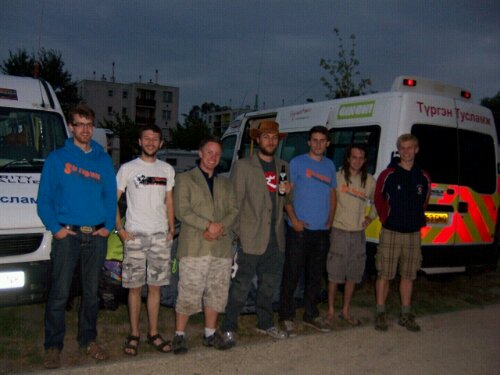
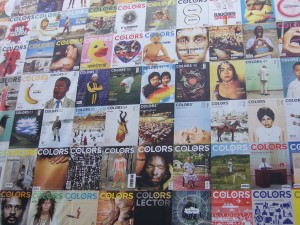
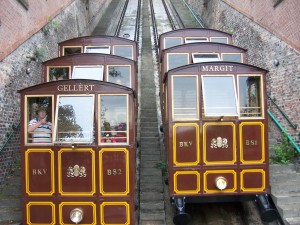
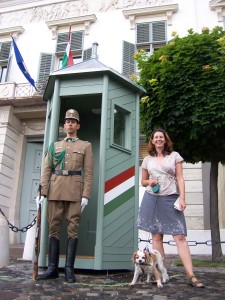
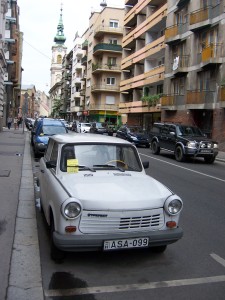
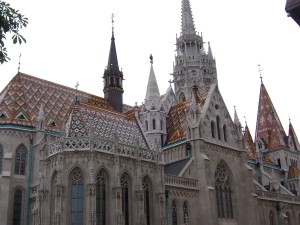
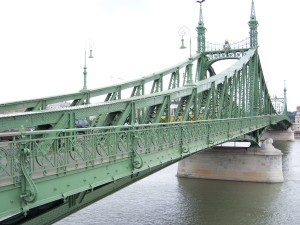
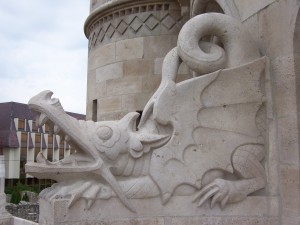
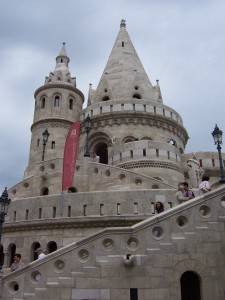
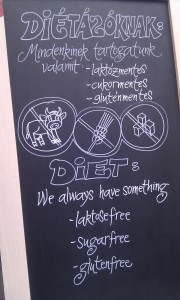
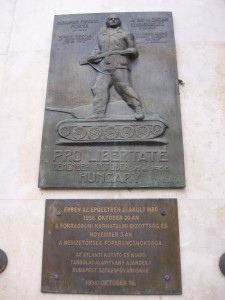
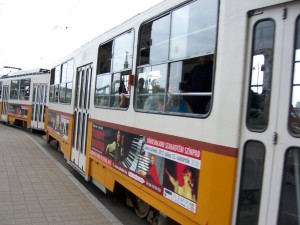
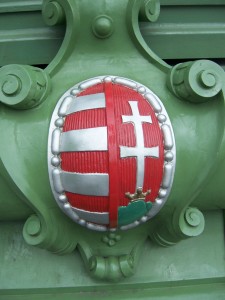
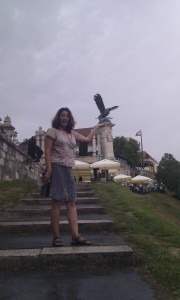
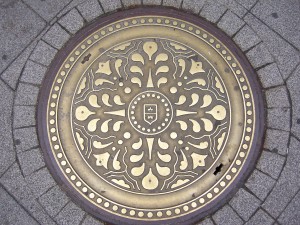
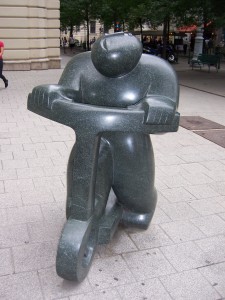
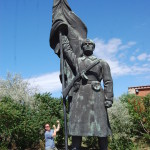

Leave a Reply
Want to join the discussion?Feel free to contribute!